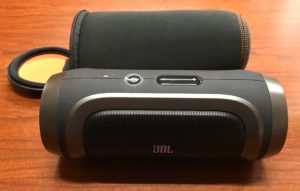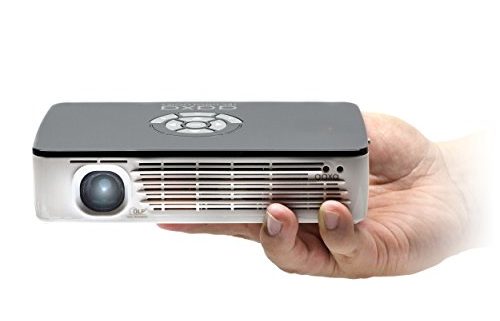Portable Presentation Toolkit
 Many of us do more than a few “presentations” both where we work and at times in situations where we don’t have a lot of control over the presentation technology available to us. That could be at a conference we are asked to speak at, perhaps a workshop or Bible study. Over the years I’ve found that the stress of giving a presentation shouldn’t be heightened by the unknowns of projectors, cables, internet and audio capabilities, especially if you prefer to use your own computer for the presentation. So I have developed a presentation “toolkit” that I never leave the office without.
Many of us do more than a few “presentations” both where we work and at times in situations where we don’t have a lot of control over the presentation technology available to us. That could be at a conference we are asked to speak at, perhaps a workshop or Bible study. Over the years I’ve found that the stress of giving a presentation shouldn’t be heightened by the unknowns of projectors, cables, internet and audio capabilities, especially if you prefer to use your own computer for the presentation. So I have developed a presentation “toolkit” that I never leave the office without.
Cables
Perhaps the most important component of my portable presentation toolkit is cables. Depending on what kind of computer you are using, your cable requirements may be a bit different, but there is still an element of the unknown because you don’t know what kind of cable is needed for the projector you will be asked to use. You also don’t know if the place where you have to connect to the cable is optimal for your presentation. For instance, I’ve been in classrooms where the cable hookup is in the back of the room where the teacher’s desk is, but I want to present from the front. That’s a problem. So cables are something I pay a lot of attention to. For my Surface Pro 4 computer I carry along:
- VGA Adapter
- HDMI Adapter
- VGA 15 Foot Extender Cable
- HDMI 15 Foot Extender Cable
The extender cables really come in handy if the plug you need to hook into is not in the front of the room. This gives you a lot of positional flexibility. Cables To Go and Monoprice are great places to find these adapters and cables that will work with your setup. A nice accessory to carry around all those adapters and cables without having them float around in your bag is a Grid-It board. They come in different sizes. I love mine.
Wireless
If you are lucky, you may have access to either an Apple TV or a Microsoft Wireless Display Adapter. These devices, when hooked up to the projector, allow you to float around the room without any wires. You just hook up to either of those two and stream your screen/presentation. Apple TV can receive the stream from your Mac or iPad, and with a software program like AirParrot 2 you can even stream from your Windows laptop. Keep in mind that to stream to an Apple TV (depending on which model it is) you have to be connected to the same network. Beware, this could be another source of stress.
One thing I do take with me is a Microsoft Wireless Display Adapter (MWDA). This is a USB flash drive sized device that plugs into any HDMI input. Most projectors have those these days. It does require a USB power source, which could come from an available USB port on the projector, or you could bring along your own portable USB charger (battery or wall outlet based). I like MWDAs because they don’t rely on wifi, but can connect directly to your computer. Warning, not all computers support connecting to MWDAs. They need to support the Intel WiDi standard, sometimes called Miracast. Many modern computers support this though.
Audio and Video
 Not knowing what might be available in the room I’ve been given for the presentation, I always try to bring along my own speakers. Even when there is an audio cable provided, I sometimes prefer my own since I know how it will sound. Again, one less stresser. The one I use is the JBL Charge. It’s bluetooth and also has an audio-in jack. It’s small, and it has a nice size battery in it that can power your MWDA too…a great bonus!
Not knowing what might be available in the room I’ve been given for the presentation, I always try to bring along my own speakers. Even when there is an audio cable provided, I sometimes prefer my own since I know how it will sound. Again, one less stresser. The one I use is the JBL Charge. It’s bluetooth and also has an audio-in jack. It’s small, and it has a nice size battery in it that can power your MWDA too…a great bonus!
The projector is the real wildcard in any remote presentation situations. It could be of poor quality. The bulb could go out. The connector could be bad. You know those times when you plug in and the whole screen has a green cast to it…or red…or blue. This has happened more than a couple times to me. So this may be overkill, but I always bring my own projector. If I don’t want to bring a larger one from our pool, I pack a P300 MicroProjector from AAXA Technologies. It’s only 400 lumens, but in a pinch it can be used in a dark room and project a 120 inch image. It runs on both DC or battery power. I’ve used it only a handful of times, but worth carrying along.
Connectivity
Often you will want to show internet web pages, apps, video or other things that require you to have a good internet connection. Don’t count on it! Countless times I’ve presented at conferences with the promise of internet and it either wasn’t available or so slow that it was unusable. Often there is internet but all the attendees are on it as well and the connection is often overwhelmed. I do always bring my cell phone to which I can “tether” my computer, but that isn’t full proof either as your phone may not have a good signal depending on the presentation room location within the building, or the area in general. ALWAYS have a plan B, which is my case is to take screen shots of any web site or app I need, and download in advance any video I’d like to play. One service I use a lot is YouTube Red, which allows you to download video to any mobile device for offline playback. So I bring my iPad along with any video I’d like to play, just in case I can’t get online or have sufficient speeds to play a video. Then I just hook up my iPad to the projector with either an html or vga dongle, or I do it wirelessly if an Apple TV is available.
One other gotcha, especially on school wifi is their content filtering software. They may have it setup to block YouTube and many other sites including social networking services. Depending on what you had hoped to share in your presentation via the internet, you may find your content blocked. Best to ask ahead of time if their network blocks certain sites critical to your presentation.
Conclusion
There are always going to be challenges with presenting technologies. Our job as presenters is to remove the unknowns and be able to focus on the message. Take matters into your own hands. So peace of mind is the driver here. Bringing along things like your own extension cord or multiplug might be a pain, but there will be times you’ll regret it if you don’t. The tools that I’ve mentioned above have been added to my bag over time, and there are rarely moments of panic anymore about the audio/visual technologies needed to present the materials I spent hours creating.









Leave a Reply
Want to join the discussion?Feel free to contribute!